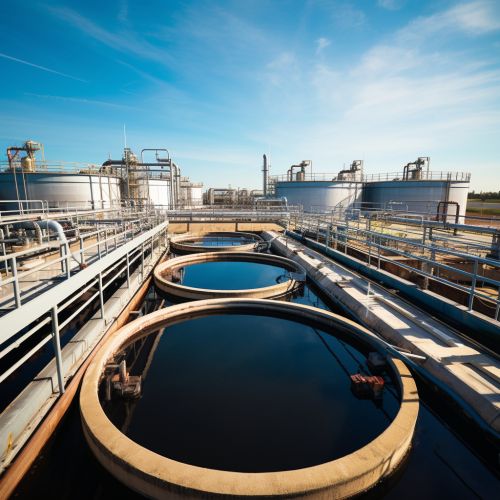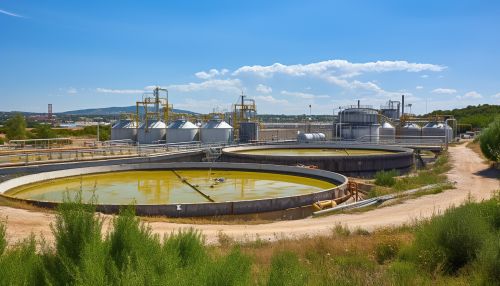Wastewater treatment
Introduction
Wastewater treatment is a process used to convert wastewater into an effluent that can be returned to the water cycle with minimum impact on the environment, or directly reused. The latter is called water reclamation because treated wastewater can then be used for other purposes. The treatment process takes place in a wastewater treatment plant (WWTP), often referred to as a Water Resource Recovery Facility (WRRF) or a sewage treatment plant.
Pollutants in Wastewater
The primary objective of wastewater treatment is to allow human and industrial effluents to be disposed of without danger to human health or unacceptable damage to the natural environment. Wastewater from households and industry contains a mixture of pollutants which can be classified into three broad categories: physical, chemical, and biological.
Physical Pollutants
Physical pollutants in wastewater include large solids and debris that are removed through processes such as screening and grit removal. These pollutants can cause damage to the infrastructure of the wastewater treatment plant and interfere with the operation of the treatment processes.
Chemical Pollutants
Chemical pollutants include organic and inorganic compounds. Organic compounds can be further classified into biodegradable and non-biodegradable. Biodegradable organic compounds are broken down by microorganisms in the treatment process, while non-biodegradable compounds must be removed through other methods such as adsorption or chemical precipitation.
Biological Pollutants
Biological pollutants include bacteria, viruses, and other microorganisms that can cause disease in humans and other animals. These pollutants are removed through biological treatment processes that use microorganisms to break down the pollutants.


Wastewater Treatment Process
The wastewater treatment process involves a series of steps that are designed to gradually remove the pollutants and produce treated water that can be safely discharged into the environment or reused. The specific processes used can vary depending on the nature of the wastewater and the required quality of the treated water.
Preliminary Treatment
Preliminary treatment is the first stage of the wastewater treatment process. It involves the removal of large solids and grit from the wastewater through processes such as screening and grit removal. This stage also includes flow equalization, which is the process of smoothing out the variations in flow rate and pollutant concentrations in the incoming wastewater.
Primary Treatment
Primary treatment involves the removal of suspended solids and organic matter from the wastewater. This is typically achieved through sedimentation, where the wastewater is held in a tank and the solids are allowed to settle to the bottom. The settled solids, known as sludge, are then removed and treated separately.
Secondary Treatment
Secondary treatment is the main stage of the wastewater treatment process. It involves the biological treatment of the wastewater to remove the organic matter and nutrients. This is typically achieved through activated sludge process, where the wastewater is mixed with a culture of microorganisms that consume the organic matter and nutrients.
Tertiary Treatment
Tertiary treatment, also known as advanced treatment, involves further treatment of the wastewater to remove any remaining pollutants. This can include processes such as filtration, disinfection, and nutrient removal. The treated water is then ready for discharge or reuse.
Sludge Treatment
The sludge that is produced during the wastewater treatment process is also treated to reduce its volume and make it safe for disposal or reuse. This involves processes such as thickening, digestion, dewatering, and drying. The treated sludge can then be used as a soil conditioner or fertilizer, or it can be disposed of in a landfill.
Wastewater Treatment Technologies
There are a variety of technologies available for wastewater treatment, ranging from traditional methods such as lagoons and septic tanks, to advanced technologies such as membrane bioreactors and reverse osmosis. The choice of technology depends on a variety of factors, including the nature of the wastewater, the required quality of the treated water, and the available resources.
Environmental Impact
The treatment of wastewater has a significant impact on the environment. On one hand, it helps to protect water resources by preventing the discharge of pollutants into the environment. On the other hand, the treatment process itself can have environmental impacts, such as the production of greenhouse gases and the consumption of energy and resources.
